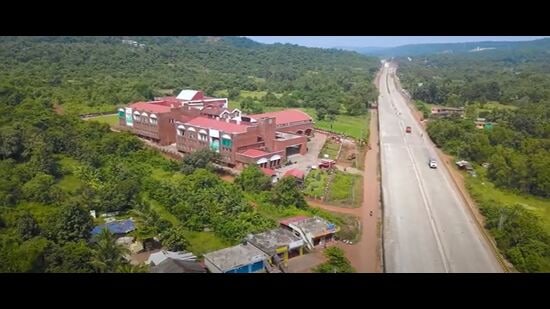The Goa government’s approval to convert some green zones into “settlements” through an amendment of the Goa Town and Country Planning (TCP) Act last year was brought in to rectify arbitrary land conversions executed by governments in the past, senior officials aware of the matter have said.

The introduction of clause 17(2) in the Goa Town and Country Planning Act, which came into force on March 2, 2023, allowed changes to Goa’s land use maps to fix “inadvertent errors” that needed alteration or modification. This, along with the introduction of Section 39A of the Act – it allows the chief town planner (Planning) to alter the regional plan after giving a notice of 30 days to invite suggestions from the public — has become a matter of concern for environment activists, even as the government says it is simply meant to undo old wrongs.
Environmental groups such as the Goa Foundation have raised concerns that this will allow development in coastal, forest and slope areas mainly for real estate. But government documents laid in the state assembly list out its defence of the policy. For instance, the documents say that the Digambar Kamat-led Congress government’s Regional Plan (RP) 2021, introduced in 2008, allowed the conversion of 94,057,700 square meters of land, which was shown as a “marginal increase of 3%”. RP 2021 was scrapped in 2012, soon after the Bharatiya Janata Party came to power in 2012. Kamat was in power from 2007 to 2012.
“Many people lost their properties due to the idea of rationalisation. Without any thoughtful consideration, their land was classified as NDZ, paddy fields, etc.,” said government officials, pointing out that this needed to be addressed. That’s where section 17(2) came in because it “allowed citizens to approach the department with their corrections, facilitating a transparent process”, they added.
The department said that applications to identify “errors” are looked at by an expert committee and have transparent guidelines for conversion. Broadly, they are in the following categories – land which was in the middle of a settlement zone but was marked as “non-settlement zone”, 53,000 square metres marked as institutional zones, or land “incorrectly designated as playgrounds due to unsuitable topography” – the officials cited above said. The clause also looks at resolving errors such as roads shown over existing structures, and restoring permissions to properties that were “partially marked as non-developable despite having uniform topography”, they added.
To counter charges of indiscriminate commercialisation, the department says that its policies over the last two years are aimed at promoting sustainable tourism. For instance, the Goa Land Development and Building Construction Regulations (GLDBCR) were tweaked to allow agriculture research centres and similar institutes in orchard areas, while also increasing employment opportunities, officials said, highlighting that one of the changes to the regulations allow for greater disabled access to spaces such as public beaches.

